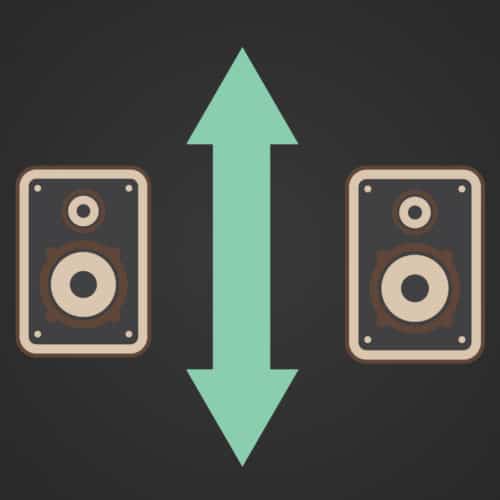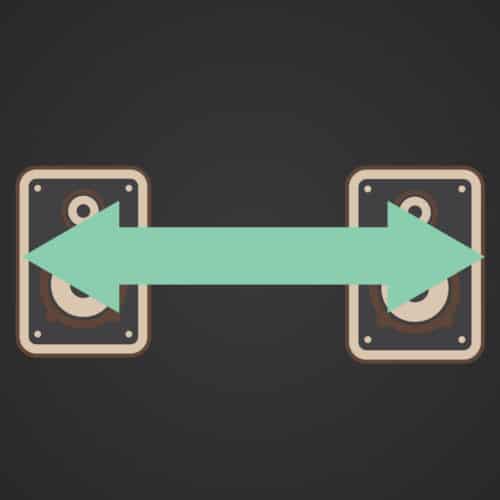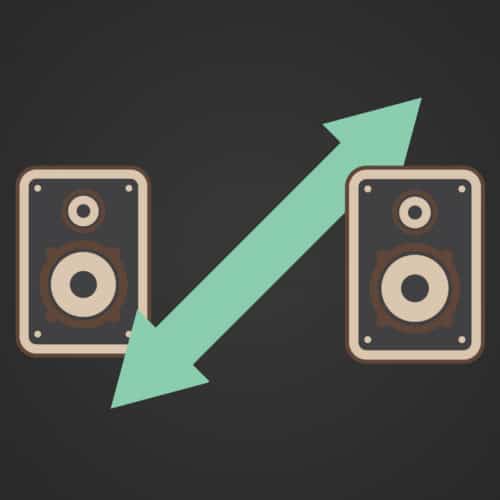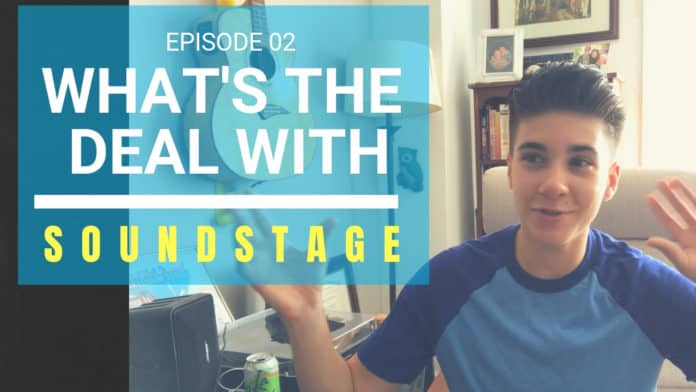02 Episode: What’s the Deal with Soundstage?
Hello, fellow audio nerds. One of the most difficult qualities to describe when talking about how headphones or speakers perform is soundstage. The sensation of soundstage plays a huge role in many audiophiles’ opinions of such devices, and yet, it’s not really a measurable characteristic. Rather, it is a psychoacoustic phenomenon we perceive. Our ears are nothing without our brains, and our evolutionary designed brains naturally what to place things in space. So let’s get into it. What’s the deal with soundstage?
What is Soundstage?
When audiophiles talk about soundstage, they are referring to a headphone’s ability to recreate three dimensional space in terms of height, width, and depth.
The best resource I’ve discovered for describing soundstage is from a book called The Art of Mixing: A Visual Guide to Recording Engineering and Production by David Gibson. This book draws out the way that instruments can take a three dimensional psychoacoustic space, even though you may only be listening with two speakers. The book is filled with these visual keys, so for those looking to acquire more detailed knowledge, I highly recommend looking through this book.
Height – What’s the deal with soundstage?

In a general sense, instruments with high frequency information often times sound as if they are coming from a higher place in space, perhaps by the top of your head or above your head. Instruments with low frequency information often times sound like they come from down below, perhaps by your gut.
Therefore, when you’re wearing headphones or earphones, you can expect to hear a high-hat or cymbal closer to your eyebrows or forehead, whereas you might sense a kick drum from coming from your abdominal region.
I tried looking into why this phenomenon occurs, but the truth is, it seems like no one knows for sure. A lot of the potential information seems not completely accepted by everyone. However, if you’re feeling skeptical of this phenomenon, I encourage you to listen to your own system now. Listen for where the cymbals sit, the high strings, the bells, the vocal. Listen for where the kick drum, anything with sub frequencies, the bass guitar sit. Do you hear the way these sit in different places in the height domain?
Characteristics of Height in Headphones
Different headphones relay this sense of height differently, often times depending on their sense of low frequency and high frequency extension. For example, if a set of headphones seems to have a lot of high frequency extension, but not low frequency extension, high frequencies will sound super tall, whereas the low frequencies won’t go as low as the abdomen. The opposite scenario is respectively true and so on and so forth. This can be an aesthetic choice, or an aesthetic oversite. It can be overly extreme or quite narrow. Sometimes it feels very clear with lots of separation. Sometimes it seems to be not as precise. In a general sense, I find that when headphones have good separation between the frequency bands in the high frequencies and the low frequencies, the sense of height feels more precise.
Width – What’s the deal with soundstage?

You might think the sensation of width in a set of headphones and earphones would be the same across the board because, after all, they only have two speakers and they are equally far apart by virtue of the width of your head. So of course the widest an instrument could sound is as wide apart as your ears are right? Wrong!
In a general sense, the placement of instruments in the stereo field is determined during the mix process. These days, the mix engineer has control over pan pots. They will say to themselves, should this instrument be equally loud in both speakers (which our brains hear as being in the center), only coming out of the right, only coming out of the left, or some asymmetrical mixture in the right or left. These choices determine where the instrument, in general will sit from left to right.
Back in the day, you could only do left, right or center which is why you’ll notice some odd mixes coming out of this earlier time. These old mixing consoles would have only a few channels, so mixers would often put the vocal in the middle, the drums on one side, the bass and guitars on the other side. Just check out some old Beatles recordings to hear an example.
Characteristics of Width in Headphones
But in headphones, the sense of width can come across in a super extensive way in a bright, headphone with a quick transient response. The sense of width will also change if the headphones have an open or closed back because the sound really is expanding outward away from the head. Sometimes, width can make things sound more realistic and have more separation. Other times it can result in a lack of intimacy and a distraction. Headphones that do this part of the soundstage well have a nice, wide sound, without making the speakers feel like separate entities.
Depth – What’s the deal with soundstage?

The sense of depth, to me, is the most interesting soundstage phenomenon. From the mixing perspective, there are a lot of ways to manipulate the sense of depth. For example, is something becomes quieter in the mix, it often feels further away. And when something is louder in the mix, it often feels closer. However, the use of time-based effects like reverbs, room mics, and delays can push something further back. And likewise, the use of frequency filters (especially effects that filter out the high frequencies) tend to seem to push things further back in space.
One way I like to think of it is looking at a photograph of mountains going back in space. The mountains in the foreground have more detail (high frequencies). They’re more vibrant in color (dynamic response) and you can see that they are covered in trees or that they have a rocky texture. As the overlapping mountains go back in space, there’s less detail. The colors and the sense of light and dark have less contrast.
Characteristics of Depth in Headphones
Many headphones that do a good job of portraying a sense of depth have a few things in common. Many of them are open-back. They have quick transient response. They have a wide frequency range with good extension in the highs and lows. And often times, regardless of the headphones, the sense of depth increases when I use a more powerful and detailed DAC.
It seems some headphones, for example, Audeze, accentuate the sense of depth as an aesthetic choice, whereas some play with this to make it more intimate, like Final Audio. Others lack depth… and I don’t always necessarily know why or how they could make it better. But sometimes it just doesn’t come through and can make the listening experience less realistic and less experiential.
Overview – What’s the deal with soundstage?
In a general sense, soundstage is super important to conveying the emotional impact of music. It can create a sense of realism, or if it’s not done well, it can make things sound two dimensional.
Thanks for reading! To watch this episode, check us out on YouTube here.
Compare the ranking of various headphones, earbuds and in-ear monitors using our tools.
Discuss this, and much more, over on our forum.
---MAJORHIFI may receive commissions from retail offers.















